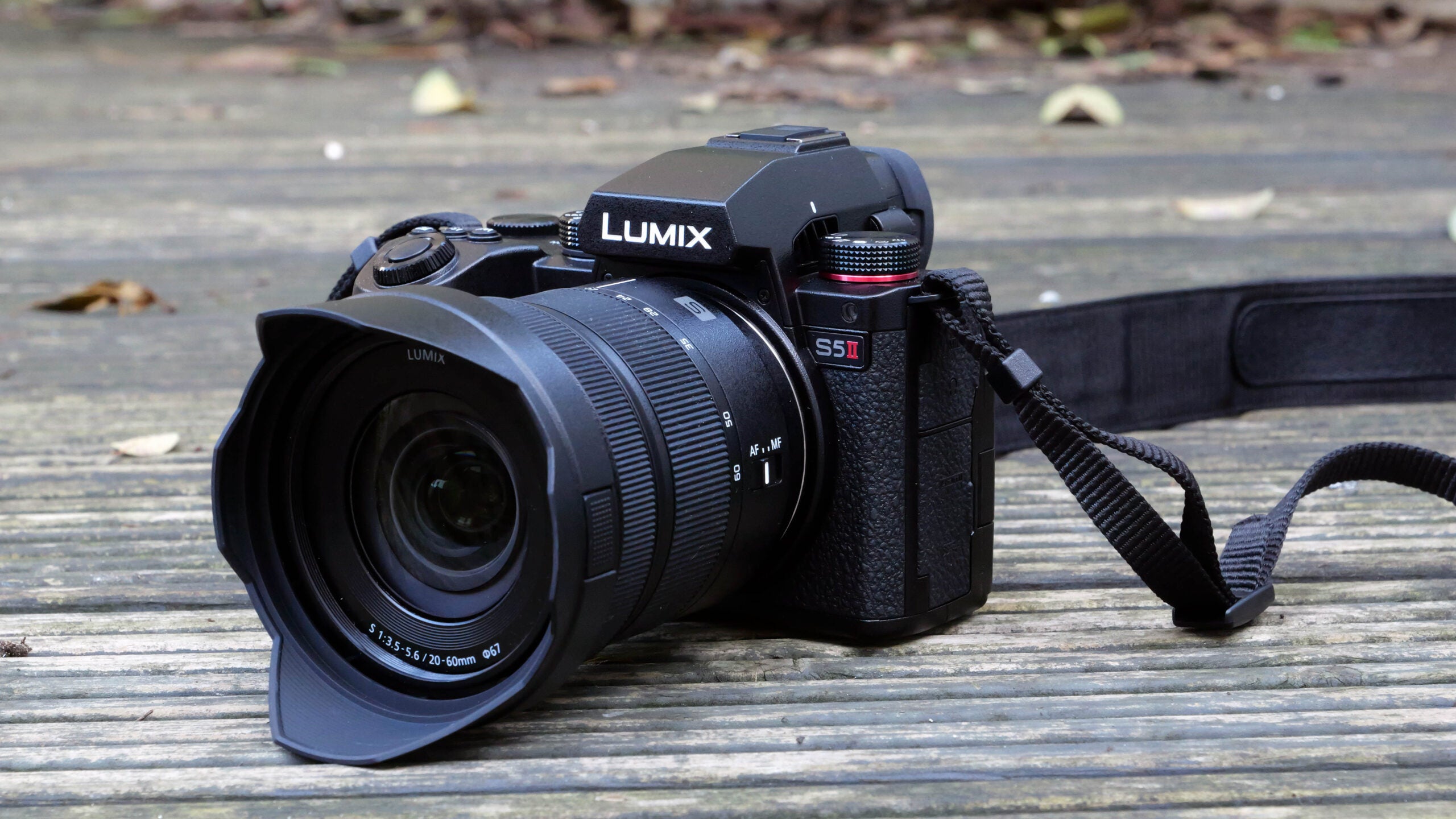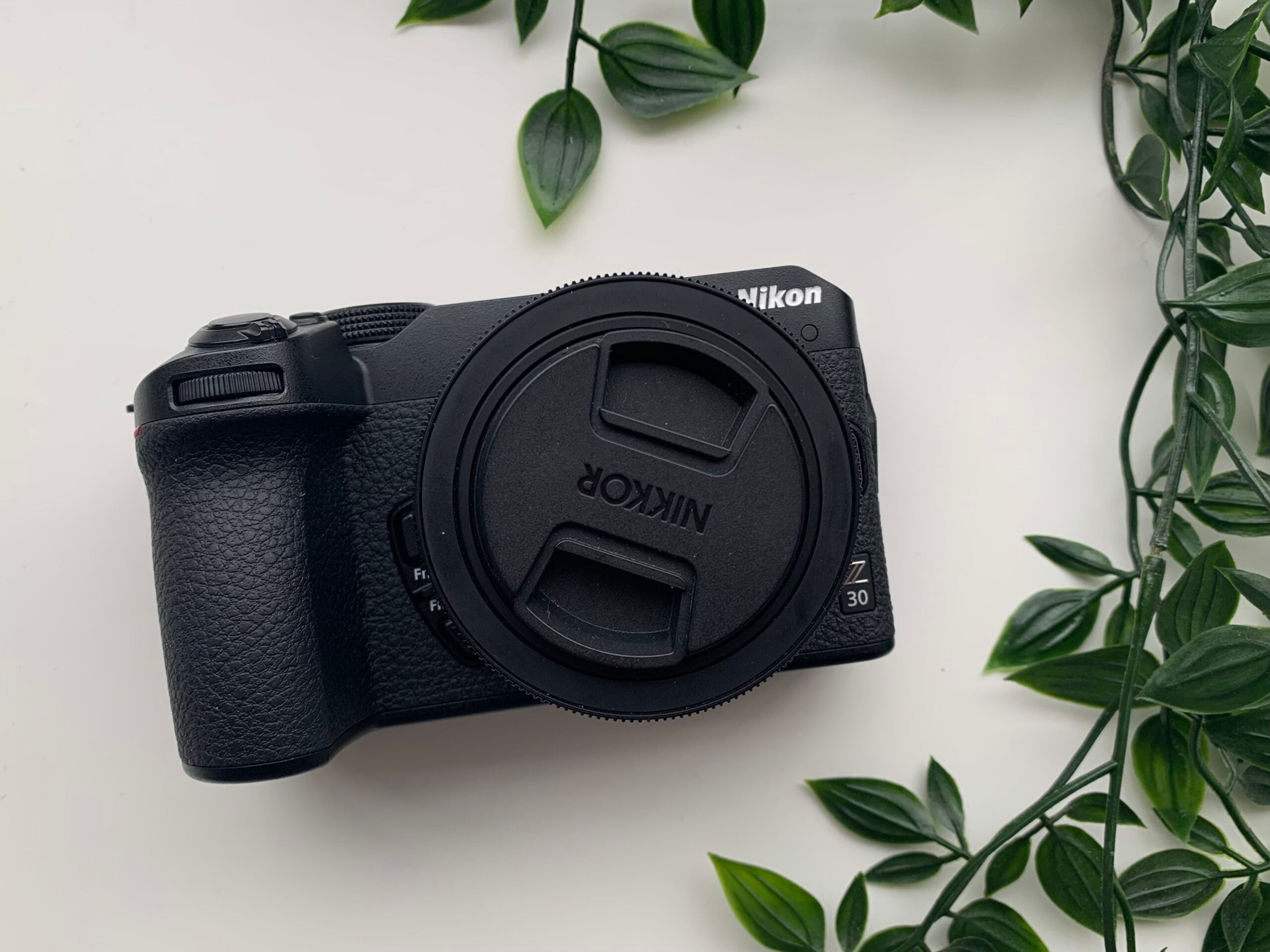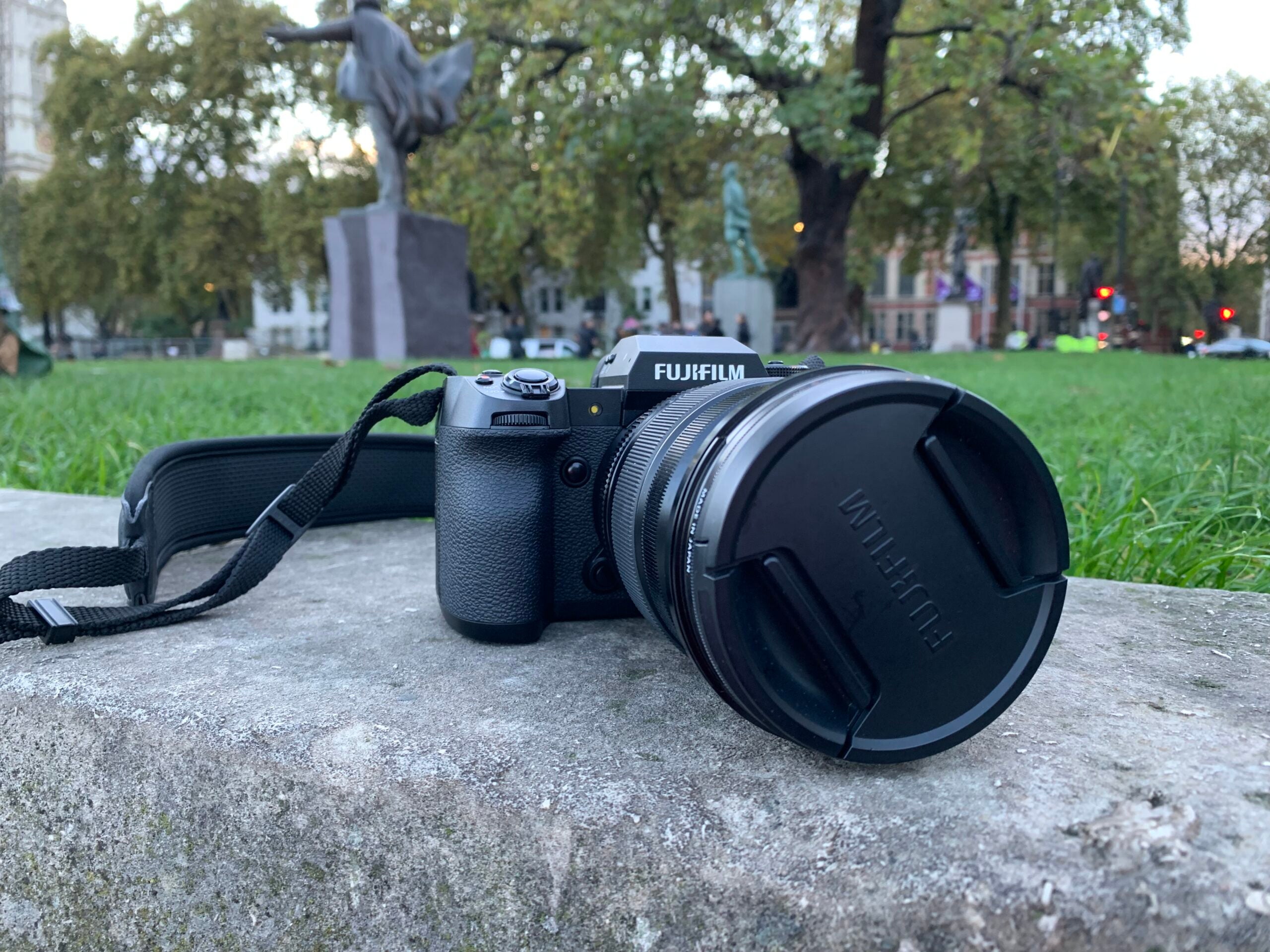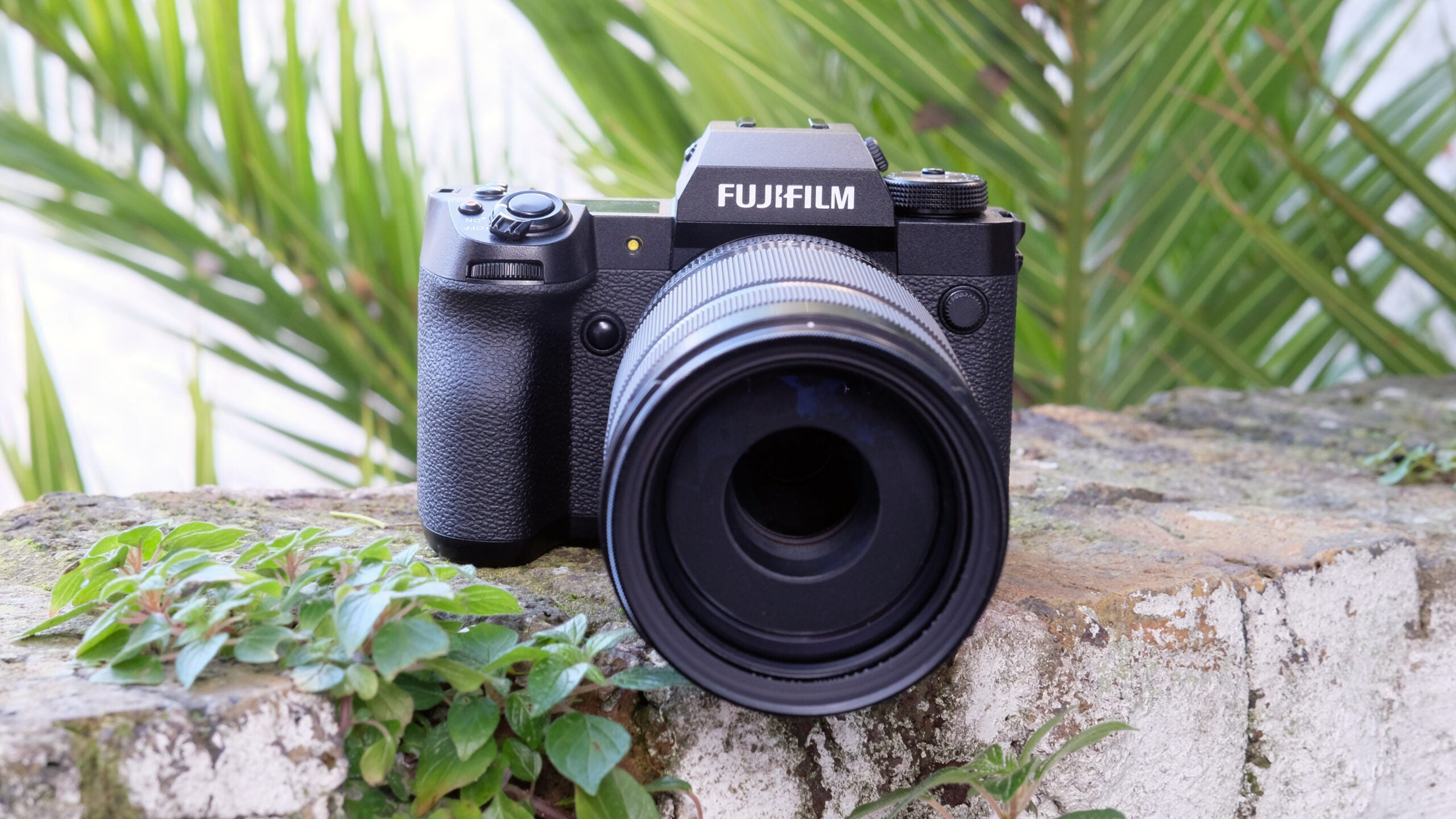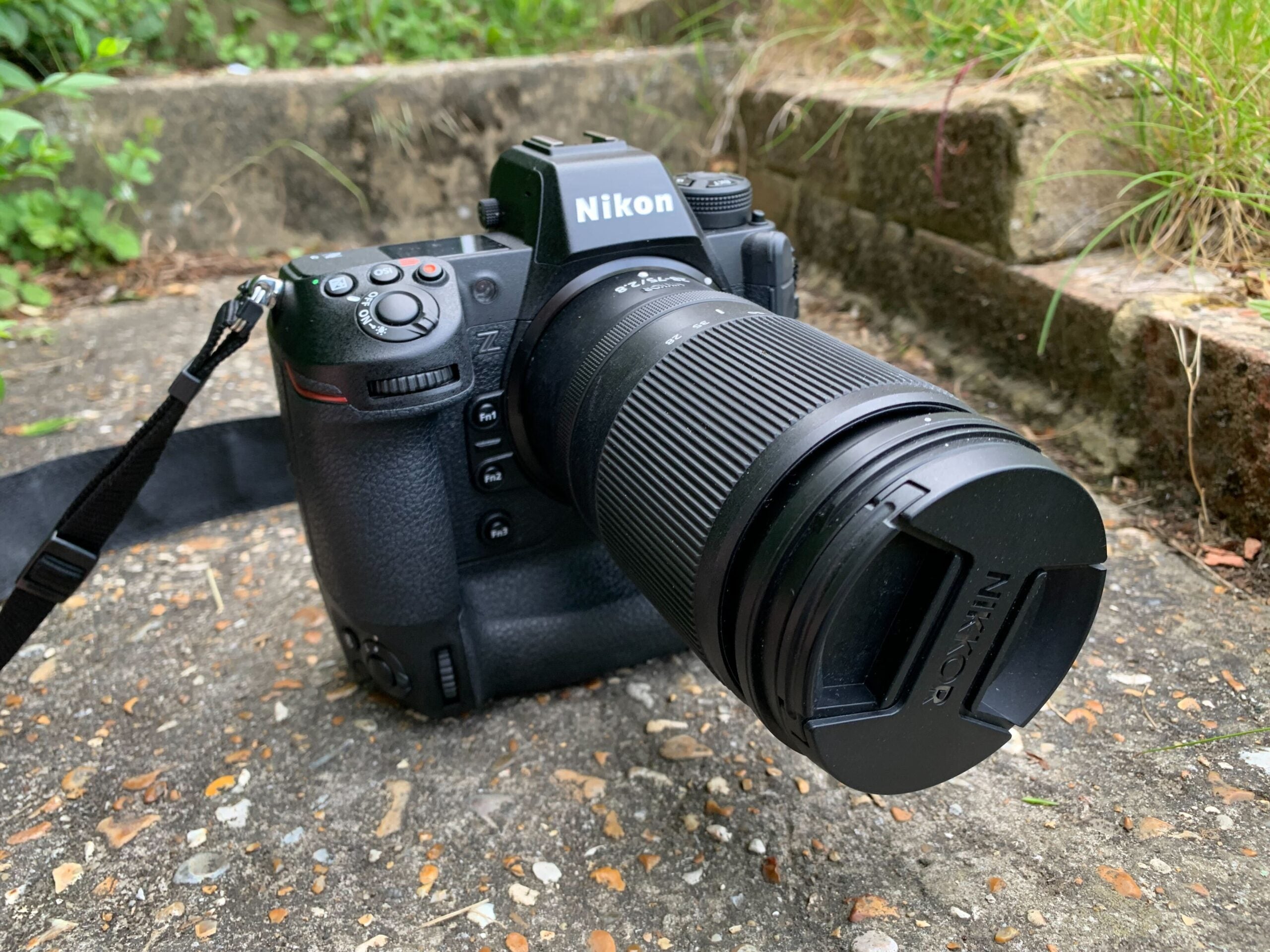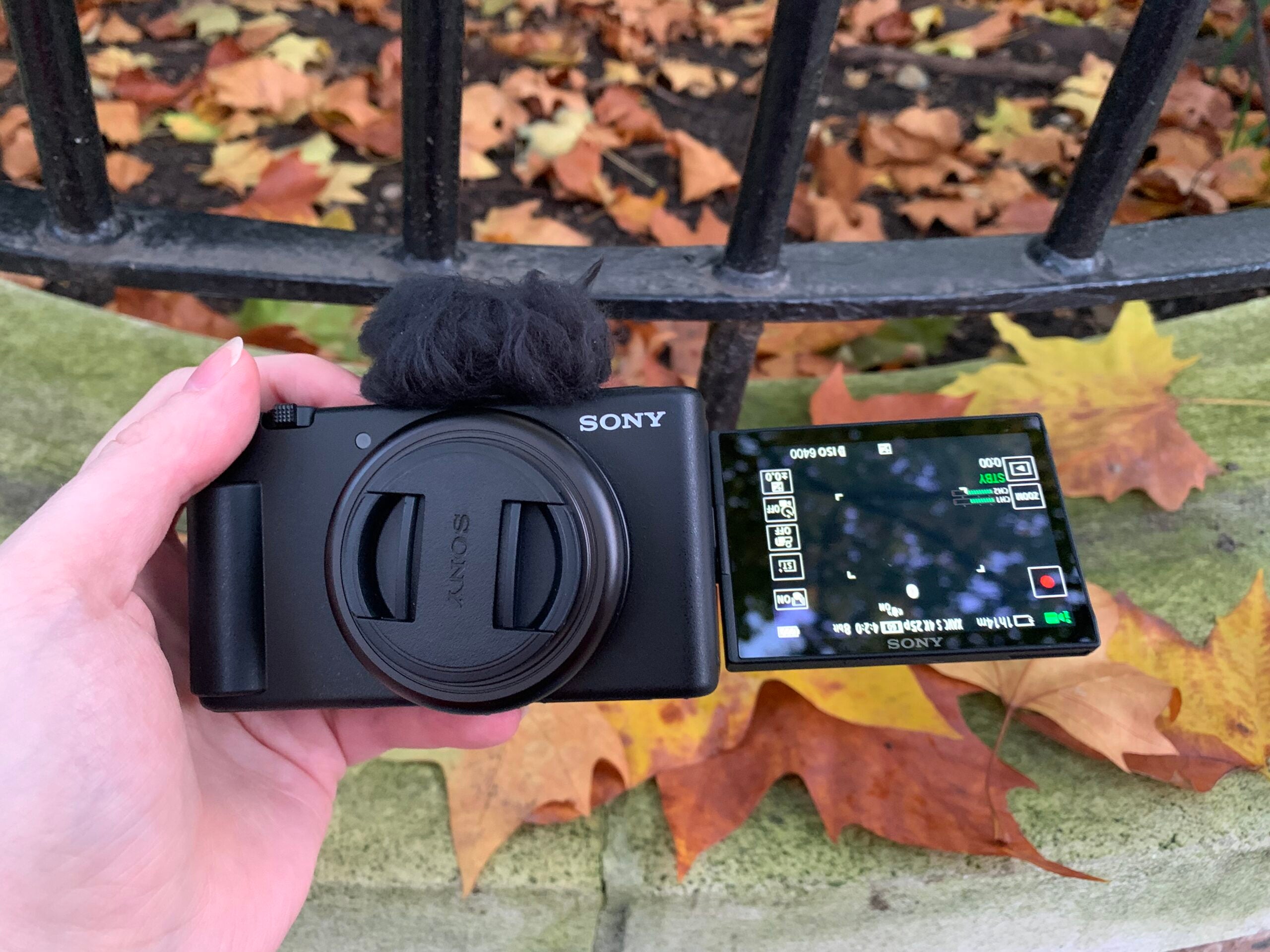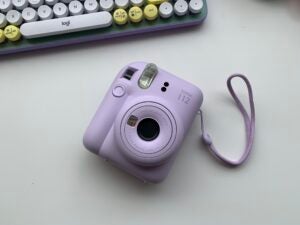
The Instax Mini 12 is a fun instant camera ideal for capturing spontaneous credit card-sized snaps at home and on the go.
Pros
- Fun, bubbly design
- Small, wallet-sized prints
- Mirror for framing selfies
- App delivers glare-free scans
Cons
- Struggles to focus in low-light
- Chunky size
Availability
- UKRRP: £79.99
- USARRP: $79.95
Key Features
-
Bubbly designAvailable in five pastel colours -
Automatic exposureWith flash to brighten photos -
Close-Up/Selfie modeWith the new Parallax Correction feature for better alignment -
Companion appScan and store prints with the Instax Up app
Introduction
It’s been three years and an entire pandemic since Fujifilm last updated its funky Instax Mini line with the Instax Mini 11.
Other variations on the Mini – including the suave-looking Mini 40 and the hybrid Mini Evo – have launched to make use of Instax’s Mini-sized film, but the bubbly Mini range has been left without a refresh for a couple of years.
Now, a new iteration of the camera has arrived in the form of the Instax Mini 12. The Mini 12 is a subtle upgrade over the Mini 11 and the still available Mini 9, retaining the camera’s famous bubbly shape and fun range of colours but with refreshed controls, an upgraded Close-Up mode and a brand new app.
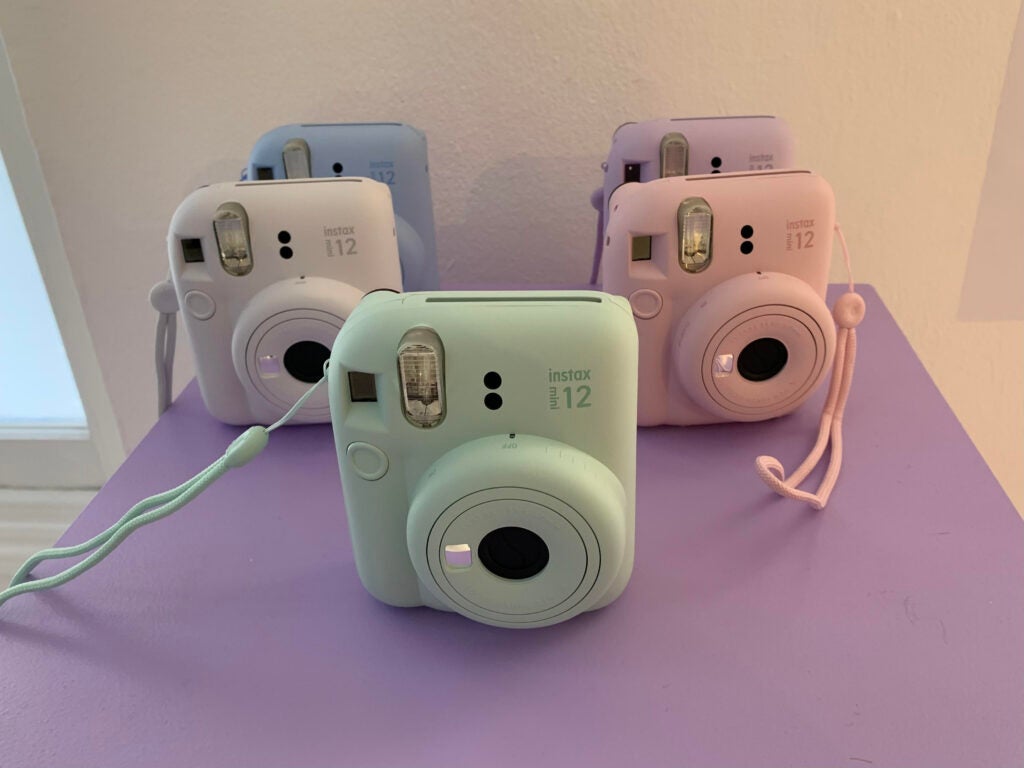
Design and features
- The Instax Mini 12 has a bright, bubbly design
- There’s a small mirror to frame selfies
- The controls are simple
With its vibrant colour range and inflated bubbly design, the Instax Mini 12 is not only the cutest instant camera but perhaps one of the most aesthetic-looking pieces of tech I’ve ever reviewed. It looks very similar to the Mini 11 but the grip no longer bulges out of the side and the colour range seems slightly lighter than those of its predecessor.
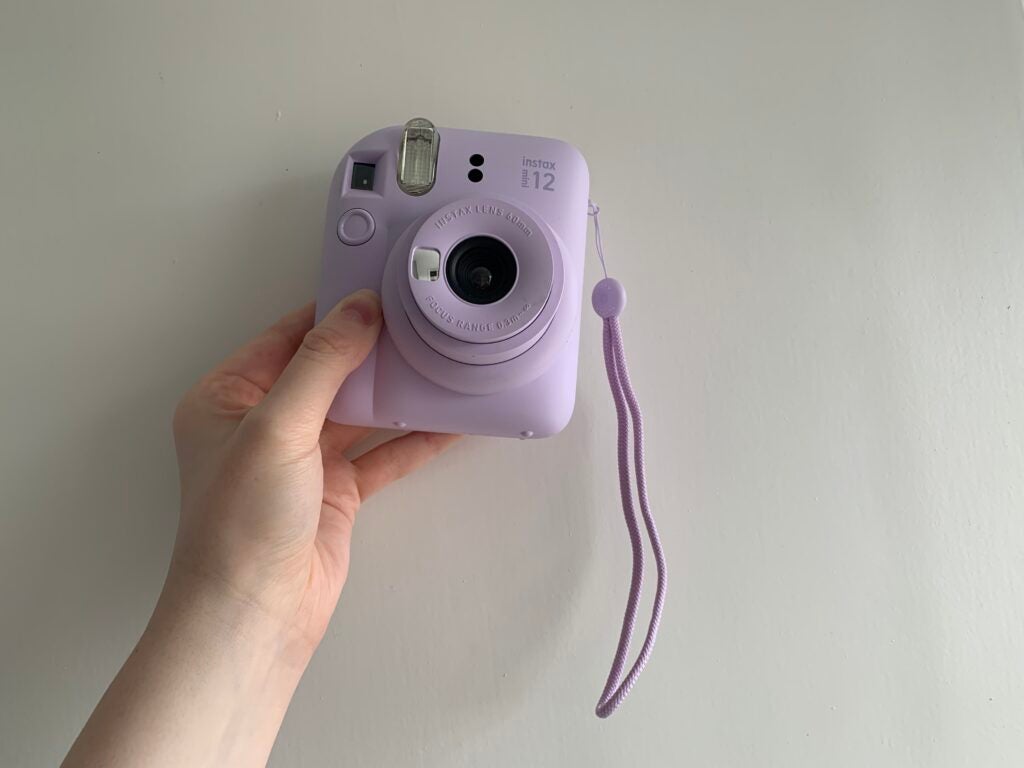
Even if you don’t find yourself picking it up every day, it’s a great-looking camera that would make a fun statement piece on any desk or shelf.
The flipside of its design is that the Mini 12 isn’t the most compact camera out there. If you’re looking for a slim instant camera you can slip into your pocket or a small bag, you might be better off opting for the Mini Evo.
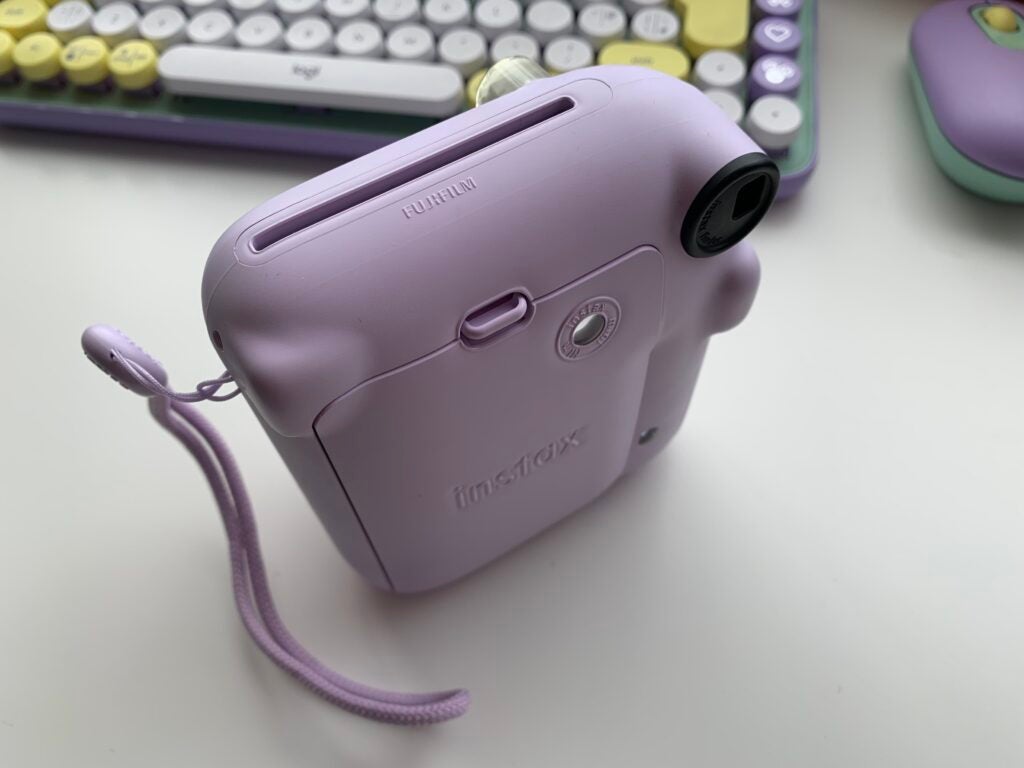
Moving onto the controls, the Instax Mini 12 does away with the separate power button on the Mini 9 and Mini 11 in favour of incorporating it into the twist mechanism on the lens.
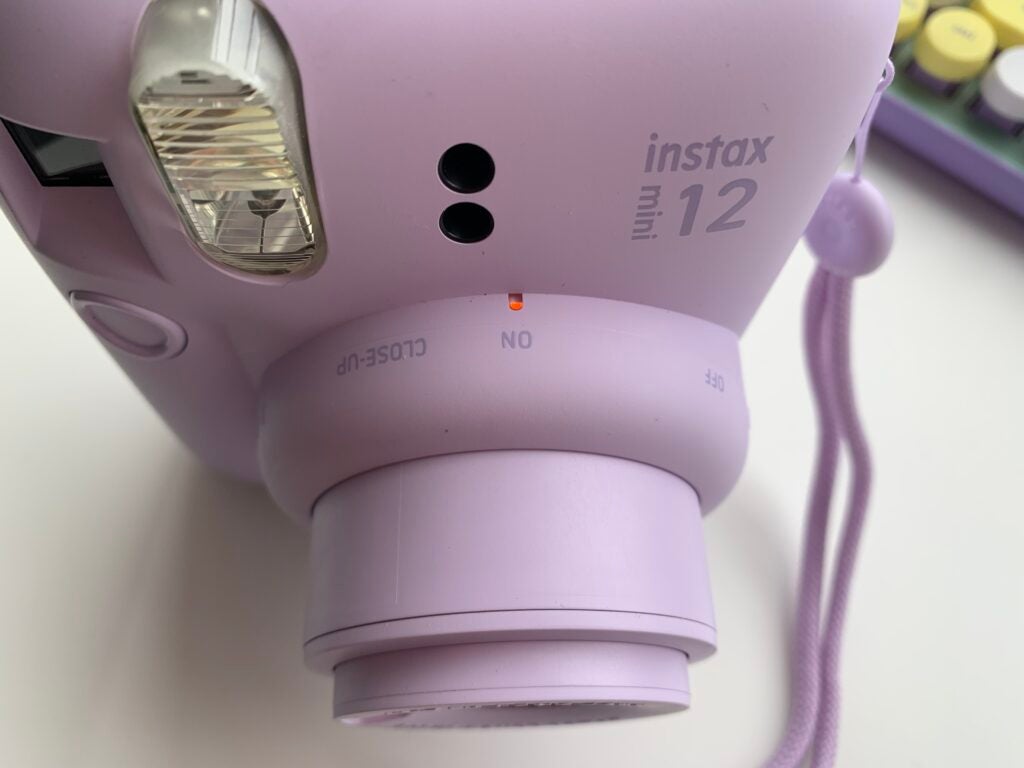
Now you can twist the lens once to power up the camera and a second time to enter the Close-Up (or selfie) mode. The only other physical button is the shutter button which now has a border, making it feel a bit more tactile.
Key features on the Mini 12 include automatic exposure and flash control to brighten up images and the new Parallax Correction feature to line the viewfinder up with the lens in close-up mode. This should allow you to get a more accurate view of what you’re shooting.
I personally found I still had trouble centring close-ups and standard shots with the viewfinder, but then instant photography isn’t really about getting the most perfectly framed shots every time.
Performance and image quality
- The camera is compatible with Fujifilm’s Instax Mini Film
- Images are sharp with colours on the colder side
- The camera takes AA batteries so no need to recharge
The Instax Mini 12 is compatible with Fujifilm’s Instax Mini film. This allows you to print credit card-sized photos ideal for slipping into your wallet, popping in the back of a clear phone case or sticking on the fridge.
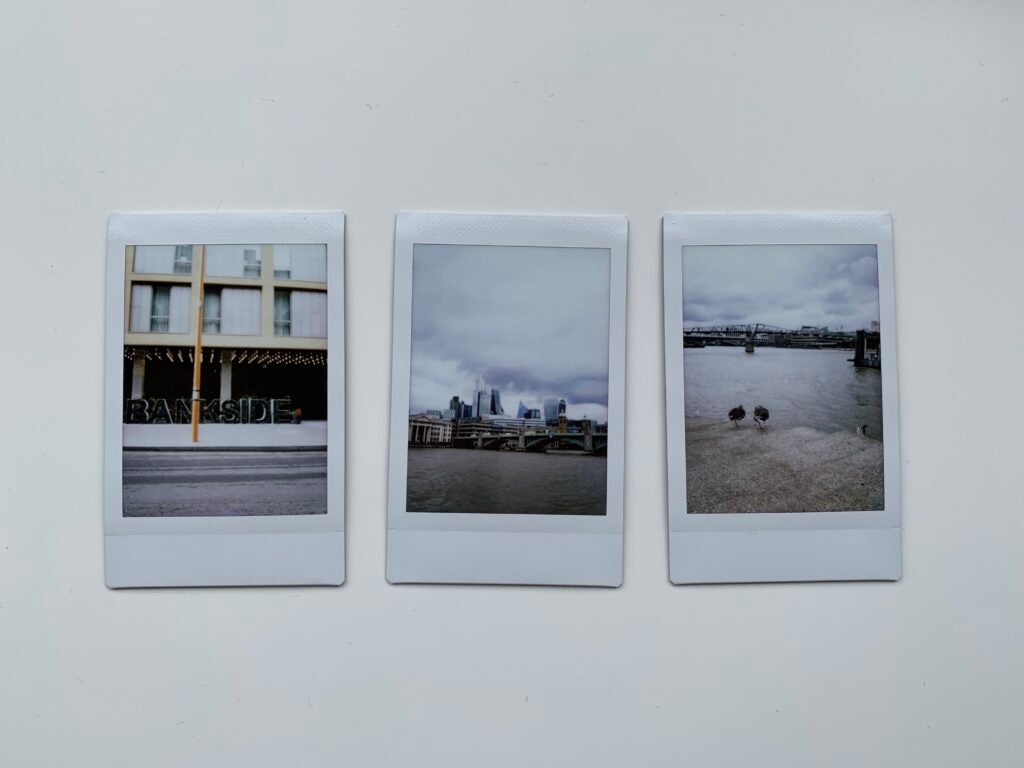
The printing time is fast. Instax estimates around five seconds which I found to be accurate, though photos do take a few minutes to fully develop.
The film isn’t cheap but at £15 ($18.50) for a pack of 20 – or around 75p a shot – it isn’t extortionate. That said, if you’re conscious about wasting film, you might be better off opting for a hybrid camera like the Mini Evo or an Instax printer, such as the Mini Link 2 or the Square Link (for larger shots).
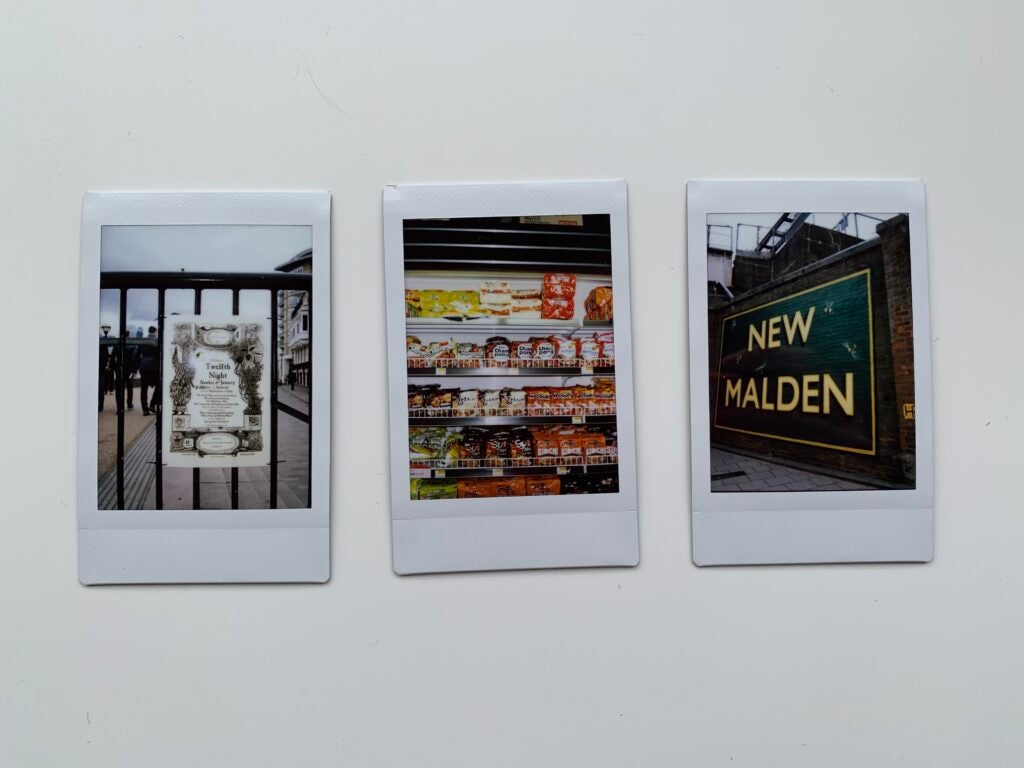
Moving onto image quality, the 60mm lens is capable of capturing some great shots. Details are sharp, from the shapes of skyscrapers in the distance to the text on a poster. Images have the slightly faded look you’d expect from instant film without appearing overly washed out, and colours are on the cooler side with blues becoming stronger as the sun fades in the late afternoon.
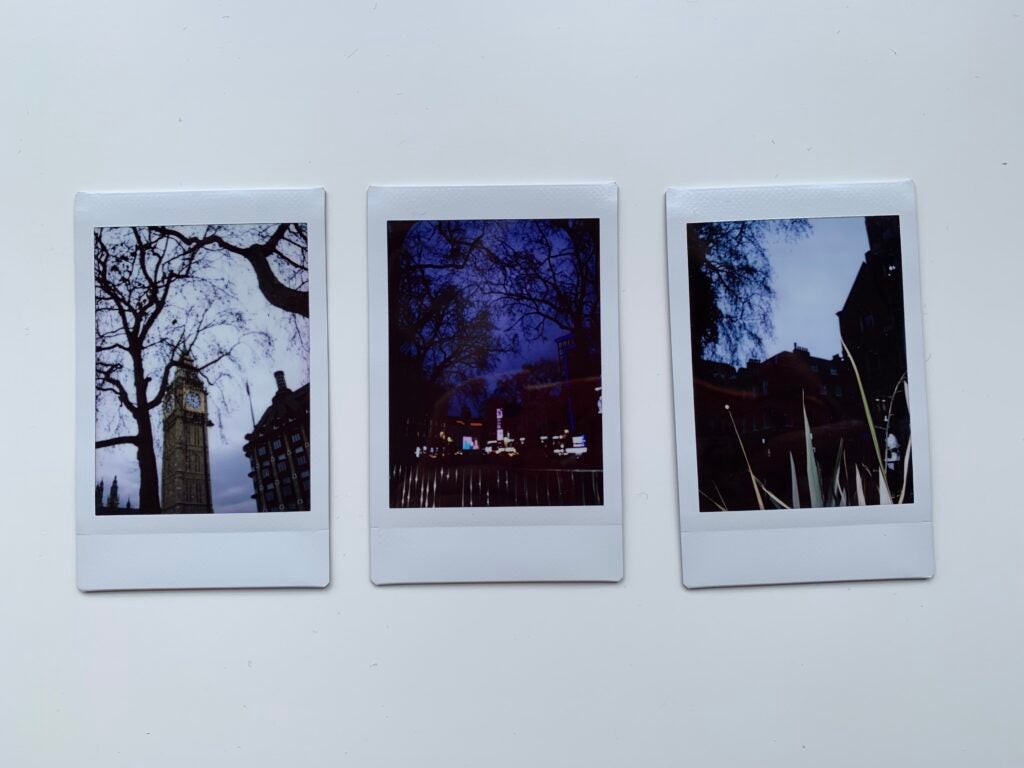
I did find that, despite the automatic flash setting, the camera often struggled to focus in low light. This was especially apparent in scenes that had some depth to them where the flash would illuminate the closest object, as well as in close-ups.
The Close-Up mode was perhaps the area in which I struggled most to get the results I wanted. Even in natural light, close-ups of objects often came out blurry and in the dim lights of a cafe or restaurant the focus was even worse.
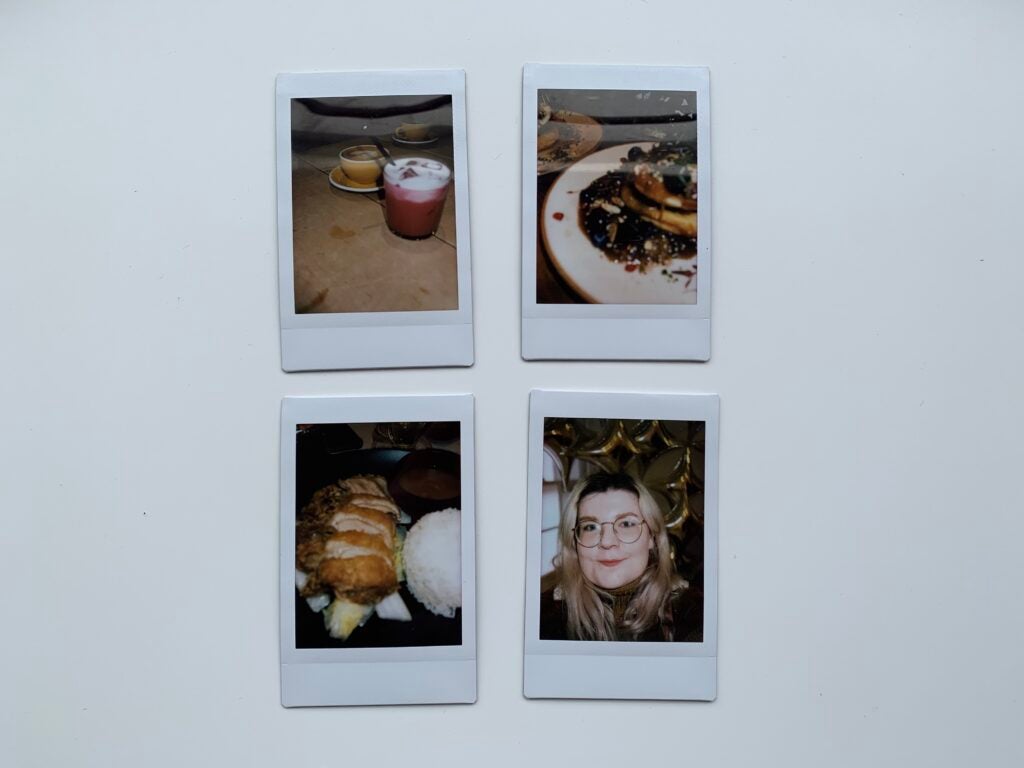
That said, the Close-Up mode worked perfectly well for selfies. Features are sharp, backgrounds are bright and skin tones, while a bit washed out, do manage to maintain some warmth.
When it comes to battery life, the Mini 12 takes two AA batteries (included) so there’s no need to recharge every night. You’ll just need to swap the batteries out when they do die. Fujifilm states you’ll get around 100 shots per set of batteries, and this matches up with experiences I have had with previous cameras of this ilk.
App
- The camera launched alongside the Instax Up app
- Instax Up is an image storage platform
- The scanning tool minimises glare on images
Finally, there’s the Instax Up app, an image storage service that launched alongside the Instax Mini 12. The idea behind the app is to allow users to scan, store and share their prints digitally from one app.
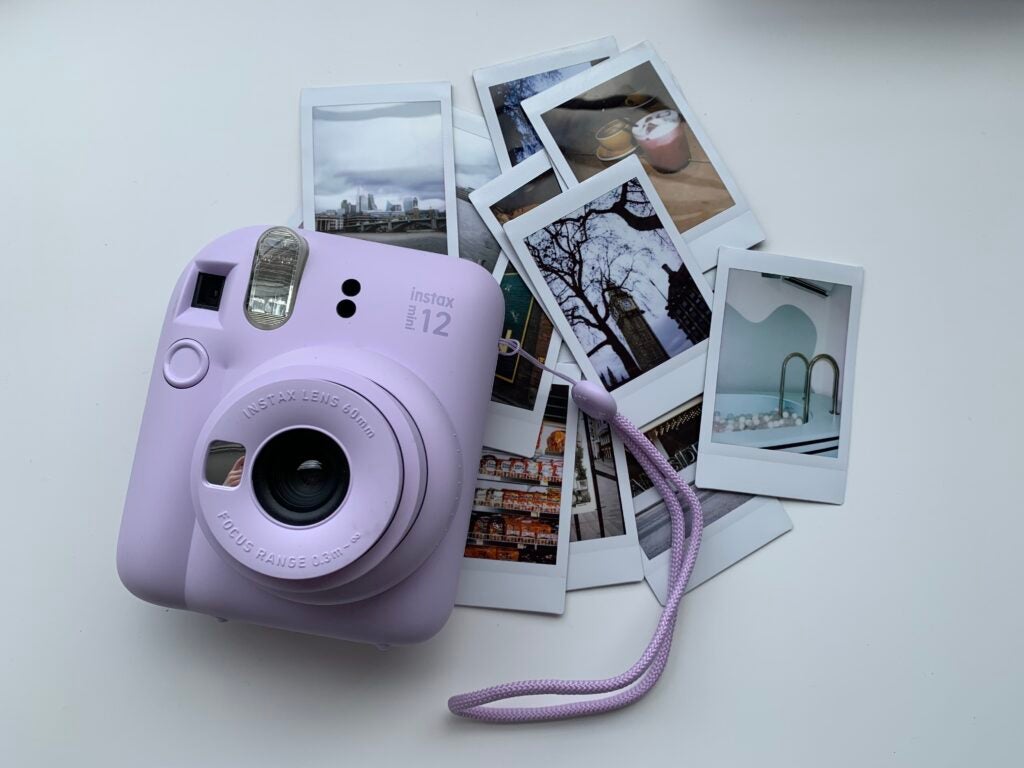
The best feature is easily the scanning tool, which allows users to minimise glare in uploads. All you need to do is follow the directions on-screen and take snaps of your print from a few different angles. The app then composites the photos into one, glare-free image.
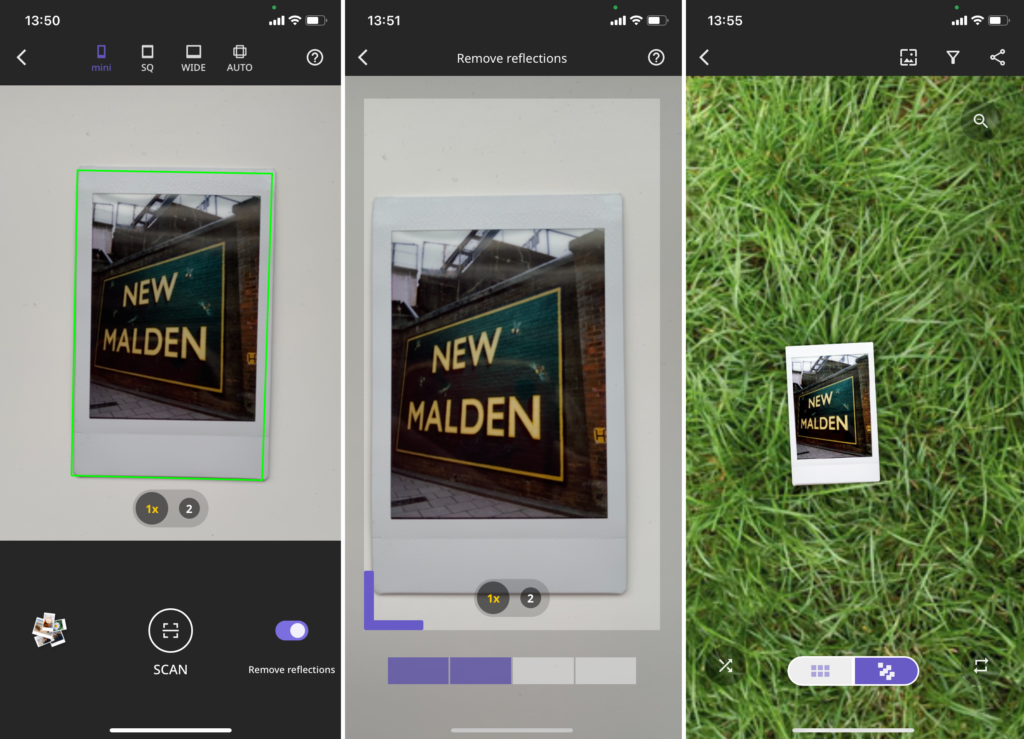
It’s a smart tool that I found did a good job of scanning in photos with detail and accurate colours, though I did need to make some manual adjustments to the crop each time before saving my final images.
Latest deals
Should you buy it?
You want a cute instant camera: The Instax Mini 12 has a fun, bubbly design and simple controls that make it a fantastic method to capture instant prints.
You want to photograph dark spaces: I found that the Instax Mini 12 often struggled to focus in low-light situations, like dim cafes and restaurants.
Final Thoughts
The Instax Mini 12 is easily one of the best instant cameras around, with a bubbly design that comes in a range of eye-catching colours.
The camera is easy to use, with very few features and buttons to contend with. The automatic exposure delivers bright and sharp images, while the Close-Up mode and built-in mirror are great for selfies, though the mode can give mixed results when shooting close-up objects, especially in low-light.
The film isn’t cheap to buy either, but if you’re looking for a fun way to spontaneously capture moments on print, the Instax Mini 12 remains a brilliant choice.
How we test
We test every camera we review thoroughly. We use set tests to compare features properly and we use it as our main device over the review period. We’ll always tell you what we find and we never, ever, accept money to review a product.
Used the camera for a week
Experimented with the regular and Close-Up modes
Tested the camera in low-light settings
FAQs
The Instax Mini 12 uses Instax Mini film for 62 x 46mm images on 86 x 54mm paper.
Yes, you can take photos in the dark using the built-in automatic flash.
No, you cannot choose which photos to print and which to delete. If you want to do this, you’ll need to buy a hybrid instant camera.
Full specs
The post Fujifilm Instax Mini 12 appeared first on Trusted Reviews.
Author: Hannah Davies
This article comes from Trusted Reviews and can be read on the original site.
